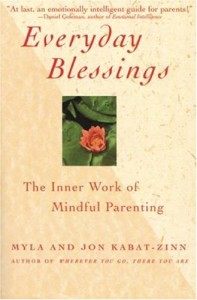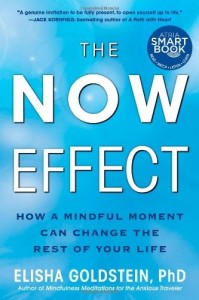Choosing Social Change Within Everyday Moments
“In between stimulus and response there is a space, in that space lies our power to choose our response, in our response lies our growth and our freedom.” – Viktor Frankl, Man’s Search for Meaning

After almost two years of having my nostrils impatiently pressed against the glass of the academic ivory tower reviewing the literature around how wise contemplative practices like mindfulness affect the parent-child relationship, I felt a jolt of awe as I took a seat across from a real parent for my first pilot interview. As our eyes contacted, a quick thought emerged that I had forgotten to put on deodorant that morning and that given the intimately small size of the office my peanut butter breath from breakfast might be more engulfing of the available breathable air than I imagined. Nonetheless, my eager interviewee, smiled back at me awaiting the scenario-centered interview I had prepared to gain access to what Jon Kabat-Zinn would call the “inner experience” of parenting. Specifically, we know very little about the conscious and mindful processes of parents required when the best solution to a parenting dilemma is uniquely dependent on the context of the parent-child interaction; situations in which parenting books, manuals, websites, and other sources of advice for parents could only shrug their shoulders and raise their metaphorical eyebrows.
As my interviewee thought-aloud about how she handled a recent parenting challenge in which her teen lied to her, she explained that in the moment that her teen lied she had a real visceral emotional reaction angrily wanting to present her evidence that proved she was right, that her teen was wrong, and then punish her child. But, then she said that she paused for a second. Her next thought was that she didn’t have to respond this way. That she had a choice. And she realized as she looked into her child’s eyes that the better choice that was more in line with her long-term parenting goals was to try and understand her teen’s perspective and to help her teen grow from this experience. As I think about why hearing a parent tell me this made my heart beat accelerate to sound essentially like an amateur beat-boxer, it was because it was that momentary pause that created a space for this parent to connect to her heart and choose liberation and growth instead of responding in an automatic and conditioned way in which the eyes see not, the ears hear not, and the heart does not feel.

In his recent book The Now Effect: How a Mindful Moment Can Change the Rest of Your Life, Elisha Goldstein says that “the simple yet subtle truth is that life is decided in the spaces and the power to choose our responses comes only with an awareness of that space. As we practice becoming aware of the spaces in our lives, we soon come to understand these as ‘choice points,’ moments in time when we are aware enough to choose a response.” Lisa Reagan, Kindred’s executive editor, fittingly adds that “there is a need for more pausing than ever, a pausing that allows a full beingness, a noticing, an inner re-integration, before returning our enriched attention to the outer world of our bodies, our children, our communities, and our planet. It is this ‘pausing’ that allows us access to our pre-frontal cortex where imagination and critical thinking are possible.” And, this pausing is what Charles Eisenstein might call “The Space between the Stories”, each pause presenting an opportunity to connect to our true selves, to shift from the Old Story of Separation to the New Story of Connection. (Read Kindred’s editorial, The New Story: Push Pause, Then Play and Charles Eisenstein’s article, The Space Between Stories.)
As I sashayed down the hall after the enlightening interview an enigmatic thought shot across my mind. In mid-stride, I tossed my backpack to the ground, startled the zipper by vigorously pulling it open, and reached around for my independent study on inter-group relations binder. I began voraciously flipping through the papers. A Ha! With Bobbie Harro’s Cycle of Socialization clutched lightly in one hand and the Cycle of Liberation held tightly in the other, I found myself in wonder about what the space between these cycles really was. What ravished my attention was that there seemed to be a beginning of the Cycle of Liberation, a conduit between the cycles, a pause that Harro calls a “critical incident”.
Harro explains that the beginning of the Cycle of Liberation involves a critical incident that “creates enough cognitive dissonance that a change is initiated within the core of a person about what they believe about themselves”. These critical incidents typically involve an experience in which an individual connects their personal experience at a systemic level, meaning that one must “name the problem” in terms of systemic assumptions, structures, rules, or roles that are flawed. Paulo Freire would call this “conscientizacao”, the way an individual comes to learn of the social, economic, and political contradictions of the world.

I experienced a critical incident not long ago when I participated in the Pangaea World Service Team, volunteering in an extremely poor community in the outskirts of Managua, Nicaragua. I had volunteered before in the US and learned a great deal about social injustice before this experience, but experiencing systemic economic injustice in-person was so overwhelming that my soul erupted and I experienced the “scrambling of the self temporarily so that the world can seep in” described by Kelly Bulkeley in her book The Wondering Brain, which correlates with the cognitive dissonance that Bobbie Harro depicted. I returned from that trip with a fire in the core of my heart, feeling more introspective and conscious of my strengths and weaknesses in being a social change agent, better able to see ways in which I contribute to oppression and ways in which I was privileged, and feeling more able to understand social injustice in a systemic way. Harro affirms that “significant social change cannot happen until we are thinking on a systemic level.”
Harro states “it is important to note that one can enter the cycle (of liberation) at any point, through slow evolution or a critical incident, and will repeat or recycle many times in the process. There is no specific beginning or end point, just as one is never “done” working to end oppression. There is no universal way to experience a critical incident and it is possible that we can create multiple critical incidents.” The critical incidents or pauses that we experience and create can be seen to bridge the space between the Cycle of Socialization and the Cycle of Liberation, the space between automaticity and consciousness, the space between being absent and being present, a space that presents a possibility of living in a more socially just world with ecstatic aliveness and connectedness that Albert Camus might call “living to the point of tears.”
 I have had many other heart wrenching critical incidents since my trip to Nicaragua. The process of consciously dismantling and building aspects of ourselves and our worldviews based on our new perspectives takes time and is a spherical learning process. My experiences since then have also taught me about the significance of a support network who are walking with me through these experiences –providing unconditional love, encouragement, and hugs while reminding me of my innate basic goodness and the power of staying connected to my true self through the ups and downs on the journey of liberation. I feel very grateful for those kindred souls who have departed on this journey with me.
I have had many other heart wrenching critical incidents since my trip to Nicaragua. The process of consciously dismantling and building aspects of ourselves and our worldviews based on our new perspectives takes time and is a spherical learning process. My experiences since then have also taught me about the significance of a support network who are walking with me through these experiences –providing unconditional love, encouragement, and hugs while reminding me of my innate basic goodness and the power of staying connected to my true self through the ups and downs on the journey of liberation. I feel very grateful for those kindred souls who have departed on this journey with me.
We can continue this journey by being gentle with ourselves. Even noticing the pauses that arise in our daily lives can be a first step. Then we can acknowledge these spaces as opportunities to make a choice and we can give ourselves the time we need to choose growth and freedom. We can become intimately aware of the opportunities to create transformative social change within the seemingly ordinary moments of our lives. And, every now and then we can encourage ourselves and others to choose to take one of those pause opportunities, trusting in the sheer rush of rhapsodic emotions that are unleashed when we make that choice as proof that we are becoming more whole and free.

